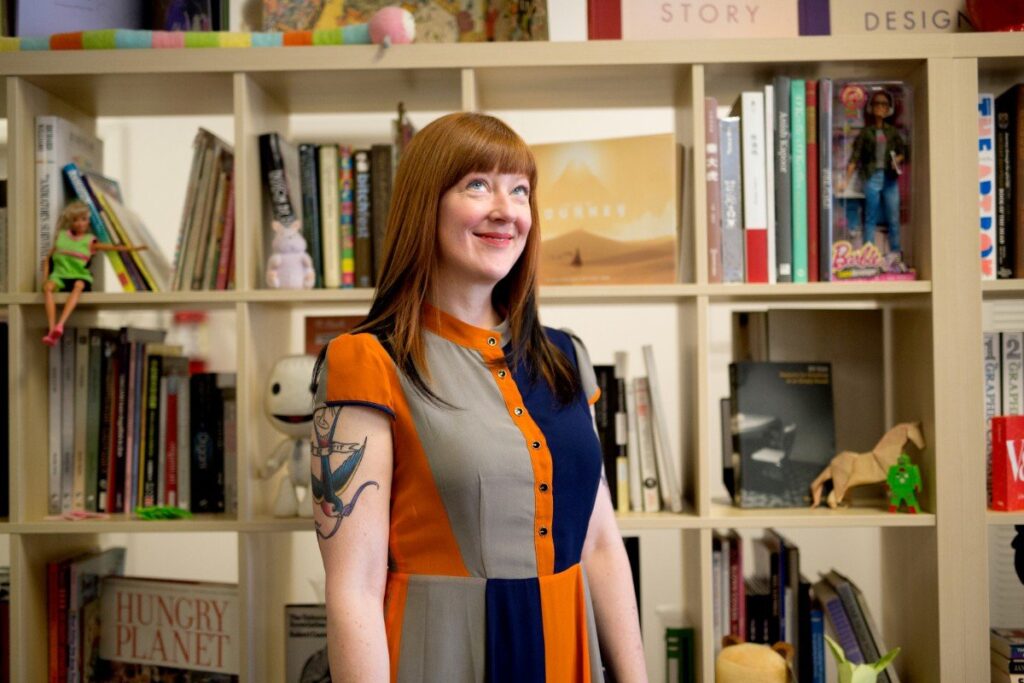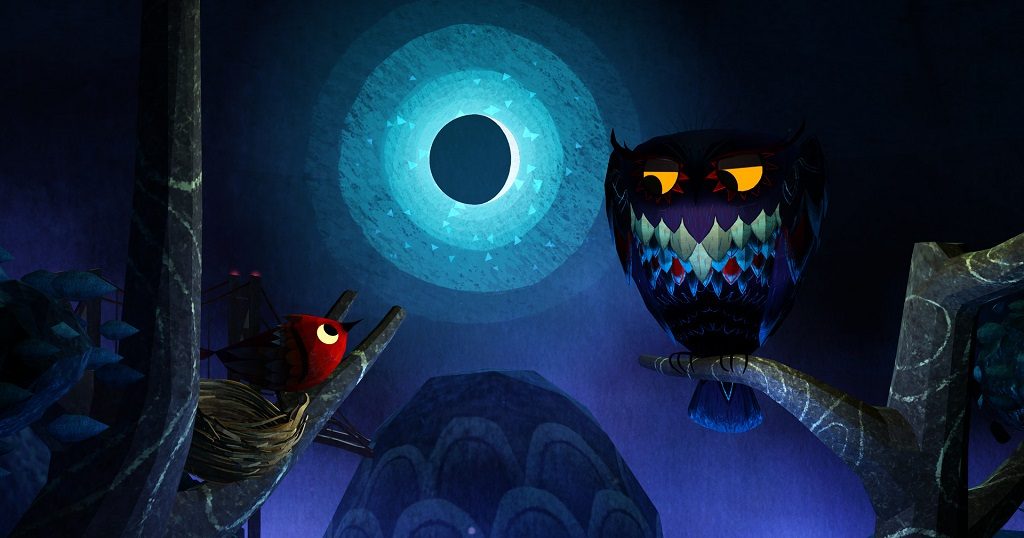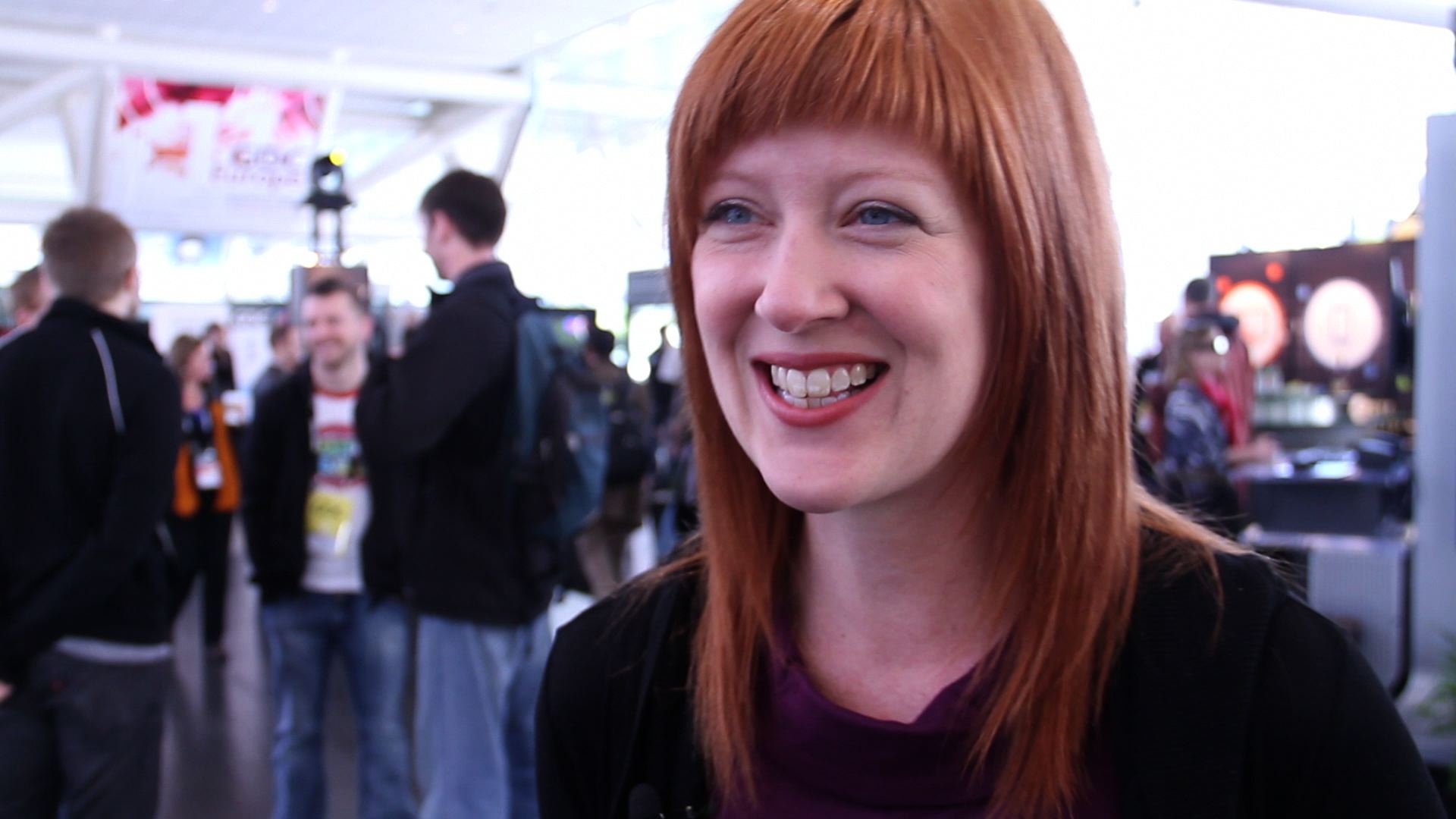
Virtual and augmented realities have been contending with a “chicken and the egg” problem for a few years now. While the technology is exciting and gets better all the time, installed bases for these platforms remain low. The devices need compelling content to grow their audiences, but some developers hesitate precisely because those audiences are still a mere fraction of the traditional gaming population. There’s something to be said for exploring new frontiers, however. Game developers are creative folks, and if they can make the financials work, making something in a burgeoning field like AR is an exciting prospect.
GameDaily chatted with Robin Hunicke, co-founder of Funomena, in advance of her talk about AR at the LEAP conference this week. Funomena has worked in both AR and VR with Woorld on Google’s Tango and Luna (multiple VR platforms), respectively. The company has been experimenting with Magic Leap from the very beginning and is about to launch Luna: Moondust Garden for the Magic Leap One Creator Edition, which sells for a cool $2,295.
Clearly, Hunicke doesn’t see this as a commercial opportunity… so why is Funomena pursuing it?
“At Funomena we have basically developed two models for how we work,” she explained. “The first model is to build triple-I titles, I guess you would call them, for established platforms, building a game like Wattam and releasing it on PlayStation, or bringing Luna to the PlayStation, which we’re doing really soon. That’s an opportunity to make money and do what we’re traditionally very good at doing as console game developers.
“But the second thing that we do at Funomena, and the thing that really inspired Martin [Middleton] and I to start the company, is this sort of exploratory device-based work. It’s like a design consultancy. We got paid to make the content for these devices, because we are interested in exploring as well as showcasing the best features of those devices and making them look really amazing, and coming up with best practices for the developer community or for the people that are building them internally. It’s like we’re a little R&D group that can be hired to work on a specific platform.”

Some studios carve out a niche in porting titles or localizing games for overseas markets, but Funomena is more interested in developing original titles for up-and-coming platforms.
“One of the perks of being such nerds and so interested in this emerging technology stuff, is that there is a little niche there for design consulting, like a little idea type company that gets hired to do these projects,” Hunicke continued. “But the best thing about that work, in my opinion, is that we get to work with our partners at the level where they’re also still really in it, they’re developing the SDK, they’re figuring out what’s going to be on the device, or talking about different builds, or getting shipments from China.
“It really feels like you’re partnered with them at a level of a peer relationship as opposed to being, like what we talked about earlier, which is there’s capital, and the capital is coming into the business, and then the business is executing content. I really like feeling like we’re partnered with Intel, or Facebook, or Google, or Magic Leap as a peer, and that we can help them not just get across the finish line with some content in a box, but also help them make the devices friendlier for developers and tell them, ‘These are the pain points for developing. These are the things that you should fix. Here’s a way that you can improve the experience of getting it out of the box and getting it up and running.’ That kind of stuff has become I think a real passion point for us.”
Being immersed in new technologies like AR is also beneficial for young, up-and-coming developers. Hunicke has made it part of her mission to incubate new talent.
“Funomena really thrives when we have young people coming in and working with us, and people that come in from different industries,” she said. “We really enjoy bringing in people that are not traditional game developers or don’t have traditional experience, as well as people that are new to the industry. These [AR/VR] projects allow us to bring people like that into the fold, give them exposure to in-flight hardware and in-flight software, and the organizations themselves, the people inside the organizations that are making decisions, in a way that’s really insightful and educational for them, and helps them grow.
“My goal at Funomena is to generate as many healthy, sustainable, proud, and confident developers as possible, because then they can go out and start their own businesses. And they can go out and make their own games, and they can transform the landscape of games themselves as they grow in the way that I did after I left EA and thatgamecompany.”
Fostering new game developers not only helps Funomena, but it’s beneficial for the industry as a whole.
“[These AR projects are] so important as research and as, I think, development of the actual staff that work on them. I think of them as being really, little people incubators just as much as they are idea incubators,” Hunicke remarked. “And that’s so important. When I was starting out, nobody really gave a crap about my experience as a young developer. I was pretty much just slung down into the middle of my job and expected to kind of figure it out on my own. And I think that that’s changing. I think that’s for the better.”
Being among a handful of early partners on Magic Leap has given Hunicke and her team an opportunity to learn the language of AR. As much as people talked about the new paradigm of VR, working in AR brings yet another new challenge to designers. Having a close relationship with Magic Leap means Funomena can act as a conduit, getting feedback from developers and sharing best practices overall for AR. One of the biggest learnings is just giving up a certain amount of control — which is very counter to the traditional game design philosophy.
“I look back at the days of Journey and I’m like, ‘Oh, we had so many great tools, so much control.’ You have so much control when you’re drawing the whole world and you’re making everything happen exactly the way you want to,” Hunicke reflected. “It’s like being a filmmaker. You can just control the entire experience from a perspective of your desire to make the person feel something. You cannot do this in AR, and then to some extent, you can’t even do it in VR. AR is the ultimate loss of control for designers in the sense that you have to deal with the mess of everyday life.
“And so the question is, ‘Well, how are you guys dealing with the mess?’ It’s so unusual for people to completely unplug these days, even when they’re playing regular video games. Even when they’re just picking up the console and they’re going to play some Tomb Raider, or they’re going to pick up Horizon Zero Dawn. How often is the phone sitting right next to them on the couch beeping away, distracting them from cut-scenes? We very rarely totally unplug, and I think that this is a trend that we’ll be online and we’ll have access to information through the very same headsets that are trying to entertain us. I think there’s a lot of really interesting conversations to have about attention, attentional awareness, and environmental awareness in the software itself.”

Spatial computing and environmental awareness are definitely going to be crucial elements of well crafted AR experiences. One commonality between VR and AR, Hunicke said, is that developers once again need to cede control to a player’s body movements.
“The thing that I think does translate directly from VR to AR is the sense of giving up agency to the person’s physical body. I don’t get to control the camera. I don’t get to say what’s touchable and what’s not touchable. Suddenly there are things in the room that I can’t control that affect the way that you can move and stuff like that,” she noted.
“Designers love control. We love to tell you exactly what to do and exactly what to feel. And you think about how many games start with a character basically saying to you, ‘Alright, let’s get the weapon. Now that’s get in the boat. Alright, now let’s go do the tutorial things where we kill the giant thing. Alright, we killed it. Yeah! Alright!’ You can kind of sense the developer [thinking of] the list of things in the back of their mind. ‘They know how to move, they know how to load ammo, they know how to reload, they know how to pick up crates.’ But you know, in a new experience, maybe none of those things are relevant. It’s just a really fascinating time for designers.”
These design tropes that some developers too often fall back on make having young talent at your studio all the more important if you’re going to attempt tackling something as nascent as AR. Hunicke’s goal of cultivating young talent helps break the tendency to lean on tropes before it becomes too ingrained.
“A lot of developers my age — I’m 45, so I’ve been making games for 20 years — have habits. I have patterns. I have ways of thinking that I have to constantly question my expertise about things, and my intuition isn’t always right,” Hunicke said. “Young people and people that are coming from other industries and experiencing this technology as a first, I think they have a very fresh perspective, and they are able to imagine things that I can’t.
“I’m really excited by the fact that it is such a different paradigm of design and that you do have to think of it it much more like a theater performance or a dance, like a combination of the person’s own choices about where they’re going to be [experiencing] the content themselves. Are they in their living room, are they sitting in the kitchen, are they at a crowded party, are they on a train or a plane? Where are these people where they’re doing these things?
“Over time it’s much more of a collaboration between you and the user, and there’s a dialogue that can happen there. I think it’s really exciting to be able to have young people coming into the studio and working on these things, because they can see past or through what I would consider to be established paradigm, to things that are totally, totally new. VRChat is a perfect example. There’s just so much freedom in that space, and there’s so much unknown yet to be discovered in the way that people are social in VR.”
Current AR headsets like Magic Leap and Microsoft’s HoloLens have been slagged for their very narrow field of view. Magic Leap offers a 50-degree diagonal field of view, which renders a rectangle that’s around 50 percent larger than HoloLens’ field of vision (according to The Verge), but it’s still somewhat limiting. Of course, this will continue to improve over time with the technology advancing, but Hunicke isn’t concerned about it.
“It’s just like everything else as an emerging platform,” she said. “You look at the edges of what it’s capable of doing and you ask yourself, ‘How do I showcase the best things?’ So how do I make the person really move around in the space … With Luna, we really tried to understand how we [could] use the 6DOF controller to ‘feel’ the space. How do we make it as tactile as possible? How do we make it as juicy and as interactive as possible? Because those are the things that we can really show off. As the field of view increases and gets better, you get to expand into more continuous spaces. And having larger feelings of a larger contiguous world, will become easier to do, but you can still do it.”
Not only do designers have to relinquish some control when developing for AR, but they’ll have to give up their pursuit of high fidelity visuals (at least for now).
“I think it’s about really recognizing that the landscape that you’re dealing with is going to be chopped up by everyone else’s stuff, their desk, their chairs, their piles of dirty laundry, whatever it is in their house. You really have to think about space and experiences as being continuous maybe across the narrative spectrum, and continuous across the audio spectrum, but not continuous across the visual spectrum,” Hunicke explained.
“It’s a very different way of designing. I’m really interested, because I think it facilitates a different way of engaging with people. It moves away from fidelity, because the world is already so high fidelity… It moves towards representation, symbolic experiences, and almost more of a poetry of action, or an economy of action, like in dance or theater, and moving away from this feeling of being surrounded by the envelope of a different reality.”
The game industry is one of the key drivers of AR/VR technology right now, but use cases for mixed reality span the worlds of entertainment, healthcare, education, and business. Hunicke’s wishlist for AR comes down to three primary things: reducing our need for physical things, reducing our impact on the world we inhabit and hope to preserve, and education.
“I really hope that people continue to leverage the ability for us to use this technology which basically puts pictures on your eyes to decrease the amount of stuff that we need to own,” she commented. “The physical stuff in our world can become less and less as we appreciate virtual objects more and more. I think we’ve already seen this in mobile gaming. People are very interested in acquiring things and having things, especially when they perceive them to be rare.
“There’s a lot of really interesting philosophy about our needs to have stuff and our need to feel special, and I think we can reduce and reuse and recycle a lot better once we live in a world where if you need to see something on a big screen, you can just use your glasses to see it rather than have a giant screen on a wall that’s plugged in that’s made out of plastic and mercury and all these things that [could be harmful]. I think we can continue to miniaturize the technology and reduce our impact on the environment through those systems.
“I also think that the awareness that comes from working in AI around situational awareness and cameras that are outward facing from a headset are the same lessons that can be learned for cameras facing out from a car or a wheelchair. And as we continue to explore how computers can perceive and deal with real space and the chaos of real world situations, which has effectively been the mission of AI for a very, very long time, as we continue to make advances on those strategies, we can improve the way our cars work. We can improve the way our planes work. We can reduce the impact of human errors from falling asleep at the wheel. There are a lot of really amazing ways in which we can save ourselves from ourselves.”
AR can be an asset when it comes to democratizing education, as well.
“It’s so interesting to see young people, especially kids, using immersive technologies, because it tickles the brain in a way that going on a field trip does, and everybody knows it’s more fun to learn by hands-on training than through a textbook,” Hunicke added. “I think that we can begin to really leverage the technology to build, you know, the Young Lady’s Illustrated Primer. We can get to Diamond Age, if we try.
“One of the projects I’m currently looking at for AR involves situational awareness and programming, and being able to use programming as a way of interacting with the space. I really believe that programming can become much more intuitive as it becomes more physical in space. I think that [Magic Leap CEO] Rony [Abovitz] is really aware of this as well. I think there’s a lot of people at Magic Leap who believe that the interface that they’re creating can educate in a way that has never really been before possible.”
 GameDaily.biz © 2025 | All Rights Reserved.
GameDaily.biz © 2025 | All Rights Reserved.